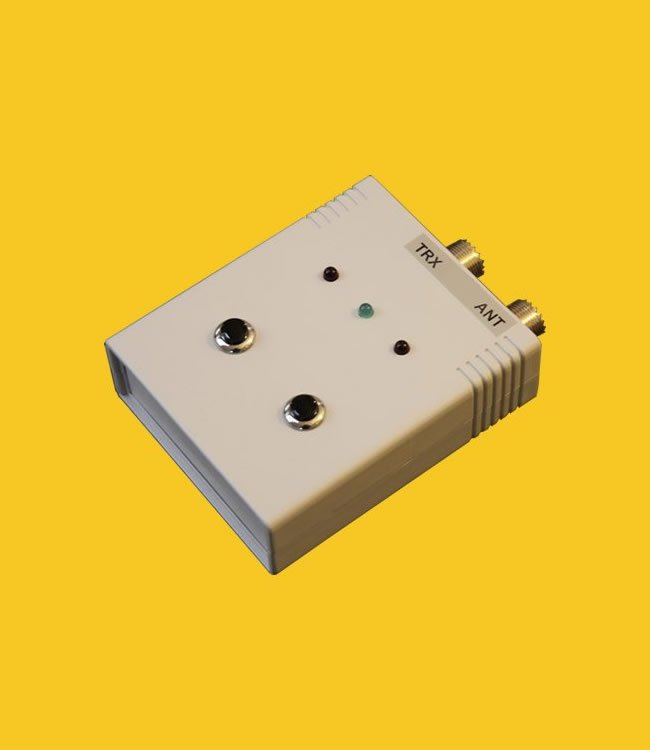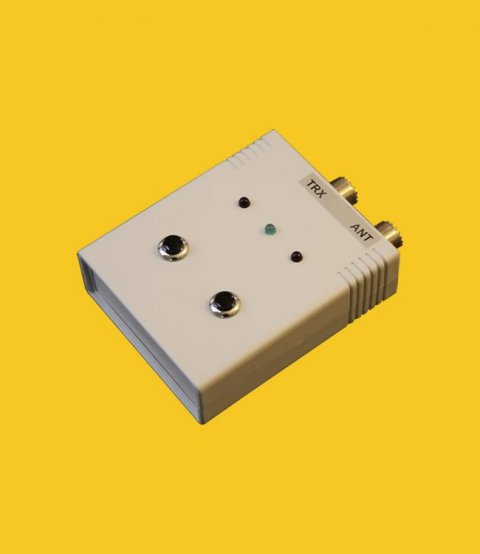CB4M - the remote tuning control box for MLA
- Home
- Creative DIY kits
- CB4M - the remote tuning control box for MLA
CB4M - the remote tuning control box for MLA
CB4M is an electronic unit designed to remotely tune magnetic loop antennas. Pulse-width modulation (PWM) is utilized to control rotation speed of a DC motor with a gear which drives the main tuning capacitor, the part of L-C circuit in a MLA. The microprocessor-controlled electronic unit was optimized specifically for the purpose of tuning the MLA. The process is sometimes named “spread tuning”.
Description
Using a mechanical-only tuning system by designing special tuning capacitors is not economical nor practical. When a MLA using a remote tuning was being designed, this electronic solution was found optimal and economical, too.
When using the CB4M to tune magnetic loop antennas made by BTV, one important advantage is that no extra control cable is needed- the PWM control signal travels along the common RF feeder cable.
CB4M is mounted in a plastic case of 11 x 9 x 3.5 cm dimensions. On the rear panel there are two PL239 coaxial connectors, and one power jack, see Fig.1. The electronics is powered from an external AC/DC power adapter, 12V/1 A DC. (Included as accessory with MLA-T, MLA-B, MLA-C, MLA-X all made by BTV Plus). The center pin in the jack connector is positive.
The front panel carries two push-buttons, for left/right drive of the DC motor. Motor (capacitor) speed and rotation sense are indicated by two LEDs:. The center LED indicates the ON state and the correct system function is indicated by its regular blinking.
CB4M is connected with the TRX by a coaxial cable with two PL connectors. The other PL connector on CB4M is then connected to MLA feeder cable. If one uses more MLAs switched by an antenna switch, then one CB4M can be used to tune all of them.
CB4M allows after a short training to tune fast and exactly a MLA to a desired frequency. If DC-only tuning is used, and speed controlled by DC voltage, tuning would never be so easy and exact. Thanks to PWM and mainly the sophisticated software, motor speed is gradually adjusted to four stages over time, in both rotation senses.. As the tuning capacitor used in all ML-A-T, MLA-B, MLA-C, MLA-X has no mechanical stops, then rotation sense is not important to tune in one direction; pushing button 1 does not mention the frequency should be rising and button 2- frequency decreasing.
First speed stage: generates one < 200 ms pulse upon pushing a button.
Second speed stage: generates a pulse series with X2 width upon pushing a button < 5 sec.
Third speed stage: generates a pulse series with X3 width upon pushing a button > 5 and < 10 sec.
Fourth speed range: generates a pulse series with X4 width upon holding a button > 10 sec.
After CB4M is connected to a TRX and a MLA, and upon connecting 12 V C power, the center LED blinks with a ~1 Hz rate. (ready). Upon pushing the left button, the left LED starts blinking, and vice versa. If all is OK, then motor stepping can be heard from MLA box. Blinking rate I only informative and does not correspond to rotation speed. Then adjust RF Gain and AF Gain on TRX to hear noise in the audio output. When the MLA tuning capacitor is turned by CB4M, noise increase can be heard at some point. This noise peak may only be heard for a short time, so returning back is advised, maybe repeatedly. With more experience this process is easy and fast. As a good MLA is only several kHz wide, tuning range can cover hundreds of kHz up to several MHz.
After such pre-tuning with the RX, tuning with the TX is next . For an exact tuning use the SWR meter. High-quality MLAs are so “sharp” that tuning 10 kHz off-resonance causes a 1-2 S drop. The CB4M designed to tune MLAs does not need to be used only as an accessory to MLA-T, MLA-B MLA-C, or MLA-X. It can be used anywhere (but possibly not in an optimum condition) a small DC motor should be remotely controlled by PWM.

